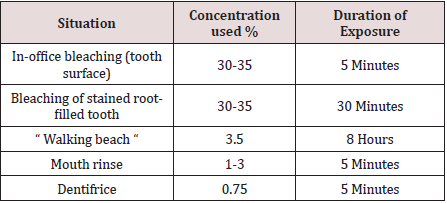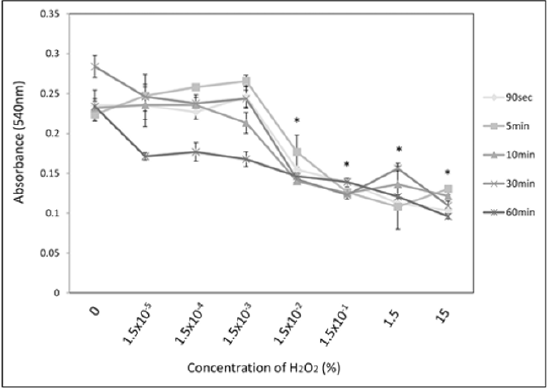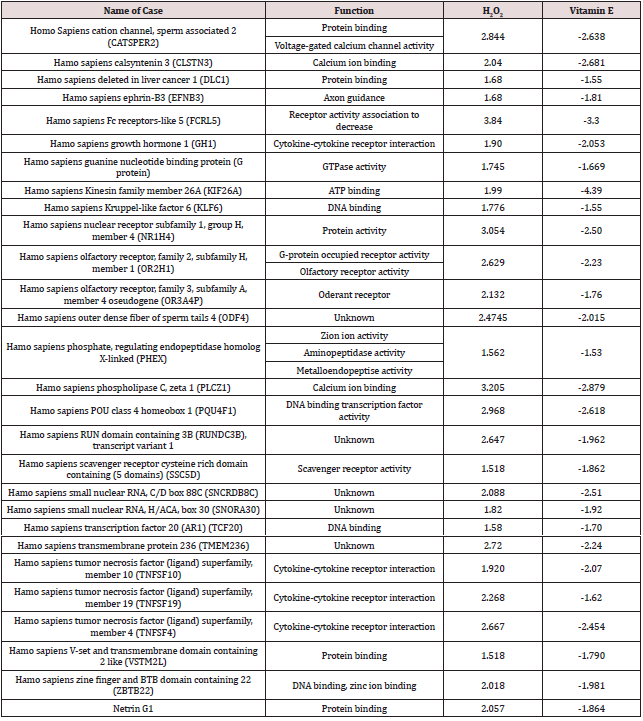Lupine Publishers | Journal of Pediatric Dentistry
Abstract
Today, with the promotion of community awareness, fortunately, the importance of oral health and maintenance of primary teeth for parents is clear. Due to the important roles of primary teeth in the oral system, these teeth should be maintained until the eruption of the permanent teeth. For this reason, it seems the parent’s perspective has changed, and children’s dentistry is now a priority for most families. Pediatric dentists should be specialized in different fields of pediatric dentistry. They will be training in the fields of pediatric psychology, child anesthesia and sedation, and age-appropriate behavior management so that they can manage children’s treatments in the best way. This group of dentists is specialized in eliminating child concerns and anxiety too. They can distract children’s minds by talking to them from what they plan to do. This friendship makes the child’s fears go away and the treatments are accomplished positively so that the child would not feel any bad dental experiences at all. Pediatric dentists provide the parents with the necessary training information to protect their children’s teeth from the very beginning of their childhood.
Keywords: Pediatric dentists; pediatric psychology; child anesthesia; sedations; elimination of anxiety; child behavioral management
Introduction
Pediatric Dentistry is one of the branches of dentistry in which the dentist works with children and adolescents. In 1909, Minnie Evangeline Jordon established the first dental practice in the United States devoted only to pediatric patients [1]. This discipline was first recognized by the American Dental Association in the United States [2] and subsequently graded in other countries as a separate specialty. In general, for a general dentist to receive a child’s specialty, he must complete two to three years of special training. In this area, the dentist not only focuses on oral and dental health, but he will also be interlinked with children and the psychological behavior of the children. Children have their mental characteristics and do not tolerate oral examination and dental treatments; consequently, they may not cooperate well with the general dentist. In pediatric dentistry, the dental practitioner thoroughly performs examination and treatment with the use of applied techniques, so that the child will become fully cooperative. To ease the process of dental treatment, they will use the appropriate and fun tools for the child to accept the dental procedures. The dental office environment is also one of the factors that can be effective in improving the treatment in the child [3]. Entertaining the child before and during treatment with toys and cartoons is one of the things that play significant effects [3-5]. The pediatric dentist offers a range of therapeutic approaches that can help the improvement of the oral health status of the child. The pediatric dental specialization has given special attention to dentistry in children from birth to adolescence. Due to the importance of pediatric dentistry, a pediatric dentist must have the experience, expertise, and the ability to maintain the health of teeth, gums. In general, the oral conditions of children can be monitored by a pediatric dentist at different stages of the child’s development [4]. If oral health is neglected, the likelihood of developing dental caries and other illnesses that cause permanent complications for the teeth of the baby will be very high.
Pediatric Dentistry Features
In this article, we intend to introduce some of the most important features of pediatric dentistry.
Oral health education
Tooth decay, as well as non-compliance with health in children, reduce their school performances and create poor social relationships [6-9]. Children’s dentistry with providing a pleasant and educational environment for children and adolescents not only reducing their stress but also can greatly increase the awareness of children and prevent the occurrence of various types of oral and dental diseases [7].
Specialized children’s dental services
Primary teeth are very important in childhood and adolescence, which plays an important role in their correct chewing of foods. Not only does this contribute to the health of children, but it also helps children to speak the words correctly. All services such as primary teeth restoration, pulpotomy and pulpectomy procedures, SS crowns, fluoride therapy, and permanent teeth services in children are provided by children’s dentistry.
General anesthesia
One of the causes that prevent children from visiting the dentist is the fear and anxiety in referring to pediatric dentistry [5,10]. This fear causes the child to suffer from oral and dental illness due to a lack of regular referral. In a general dental office, due to a lack of knowledge of the psychology of the child, it is not possible to provide a warm and comfortable environment for children. Referring the child to the pediatric dentist, in addition to addressing the problems caused by the child’s lack of health, allows the child to address the dental and oral problems in a happy and intimate environment. Today, for children with anxiety and fear of referring to dentistry, general anesthesia is used during examination and dental procedures to increase the accuracy and quality of the work of the pediatric dentist.
Application of Hypnosis (artificial sleep)
Oral and dental hygiene is one of the things parents should consider from childhood. Since children are sensitive and fearful of the dental problem, many solutions have been proposed to counteract it. Sometimes children’s dental conditions are in a special situation where pediatricians turn to the use of hypnosis in children’s dentistry [11]. Dissatisfied children with a weak collaboration attitude could delay the treatment in most cases. This artificial sleep in dentistry is done by an anesthetist and is one of the newest dental care services. Although artificial sleep does not make the child feel unfamiliar with the office environment the advantage is the dental work is accomplished while they are sleeping.
Promoting the right habits
While a child may not need a dentist at the age of two, it is important to start training oral hygiene habits as soon as possible [12-14]. During dental examinations, the pedodontist can help the child learn how to use a toothbrush, or how to use dental floss to prevent dental caries and dental diseases. Considering that good habits can be formed from childhood and adolescence, so constant referral to the dentist can enhance that.
Features of Pedodontist
a) Pediatric dentists must be an expert in child psychology
and know how to deal with children; they have to able to get the
patient’s confidence in the shortest possible time [4].
b) Pediatric dentist should be able to interact with the
parents; should not speak harshly and should not blame
parents for the delayed treatment processes [4].
c) Because the child’s patience is very limited, the dentist
should be on time, and the patient should not wait for a long
time in the waiting room [4].
d) During the examination, the Pedodontist must show a
high degree of accuracy and focus on the problem [4].
e) During the dental procedure, he has to avoid talking about
things that are not suitable for a child’s age [4].
f) Treating adolescents like adults, should be another critical
criterion that a Pedodontist must pay close attention to that.
Benefits of Pediatric Dentistry
Perhaps some parents think about what the difference between dentists is. All dentists are informed about dentistry, so they can refer to any dentist for treatment. But parents may not be fully aware of the benefits of pediatric dentistry. We review these advantages.
Maintaining oral and dental health
Perhaps one of the most important benefits of pediatric dentistry is that these professionals try to keep the child’s mouth clean and healthy by using the best training and educational tools, special features, and appropriate accessories. Constant and ongoing periodic examinations can help parents alleviate the child’s oral and dental illnesses, as well as help them to take care of regularly, and identify potential problems that may appear in the future.
Preventing early teeth loss
When parents think of the health of kids’ teeth, it is better to start their job right now! Pediatric dental care ensures that the child’s teeth will be healthy, free from decay and other dental diseases in the future. Dental caries is the most common chronic infectious disease of childhood [15]. Streptococcus Mutans, Lactobacilli, Actinomyces spp. and some other anaerobic bacteria are the most primary etiologic agents of dental caries [16]. Dental services and periodic examinations of children regularly can help prevent this complication and other types of other diseases of the mouth, teeth, and gums. Diagnosis of cavities in the teeth of a child is a critical issue insomuch as the lack of continuous care and periodic examinations can lead to more acute problems, such as tooth loss shortly.
Gaining awareness of the important issues of oral health of children
Oral health has to be started at the very beginning of the baby’s birth. Even if mothers are nursing or feeding with a bottle of milk, it is necessary to start a good oral hygiene program from the very beginning and as soon as possible. Before teething, mothers should keep the gums clean with soft and wet cloth. When teeth begin to erupt, they should also be cleaned. It is essential to use the right toolset for this daily work. For example, it is necessary to buy a special toothbrush for a baby that is more suitable for his little mouth. A Pedodontist keeps them healthy by removing microbial plaques and impacted food which may be stuck in between the teeth in a routine dental examination. This is an important part of pediatric dental care because it prevents the growth of bacteria that can lead to dental diseases such as tooth decay or inflammation of the gum tissue.
Children’s dentistry and dental care
The most important background for children’s dentistry is the prevention of dental decay and intensive care for their teeth. This care should be continued under the supervision of a pediatric dentist which starts at the age of one when the baby’s teeth begin to erupt and gradually would be replaced with permanent teeth until the age of ten to twelve. It is best to take the child to a pedodontist at the earliest age and repeat this procedure every six months. This prompts not only make the child become familiar with the dental environment but also it causes the child’s fears to diminish. More importantly, in both childhood and early youth, the kid’s oral health will be under the supervision of the pediatric dentist.
The Importance of Referring to the Pediatric Dentist
Oral health is an important part of public health that plays a significant role in the quality of life of people in society, especially children. Unfortunately, the frequency of teeth decay is often high due to the lack of attention paid by both parents and children. One of the most effective measures to improve the oral and dental health of children is conducting examinations by pediatric dentists [4,12]. To refer to a pedodontist office, parents should not wait for the pain and dental problems of the child because this delay can cause more severe problems. The primary teeth are very important and depend on the evolutionary stages necessary for the health of the children’s permanent teeth. Pedodontist can help parents to provide the necessary health care for children’s oral health and give them the necessary advice. A pediatric dentist has some special skills in oral health and dental care from childhood to adolescence. He has the expertise and experience to protect and maintain and treat the teeth, gums, and oral tissues of a child of all ages. Since the first teeth have erupted, regular consultation with a pedodontist is mandatory. This visit should be done every six months. These referrals help both parents get the right information and advice on how to protect the health of the child’s teeth. Furthermore, the child will get familiar with the office environment and its staff, and get some pleasant dental experience before having caries, pain, or dental abscesses. In this case, the child will be more cooperative in future treatment sessions.
Why are Periodic Dental Referrals Essential?
Nowadays, parents should be aware of the need for periodic examinations before further destruction of children’s teeth is taken into consideration. Regarding the principle of the existence of a problem, faster treatment will ensure longer teeth life. Moreover, it will increase the function of the teeth and will include a lower cost. Because if they close their eyes to the problems, those problems will get worse every day, and these will not ever stop. Problems can be accumulated and result in tooth loss, fabricating of space maintainers and apace retainers for the edentulous area, troublous and costly orthodontic treatments, implant-prone treatments, and so on. In other words, if parents fail to take the advantage of these referrals, they will be damaging to their children’s oral health which is hard to compensate and consequently, its effects remain until the end of their lives. Effects that are being handled on time definitely would be crucial in terms of cost, pain, and the length of the period of recovery for their parents and their children.
Conclusion
Pediatric dentistry is a branch of dentistry which concerns with dental and oral health in children. Since oral and tooth injuries start in childhood and adolescence ‘prevention and treatment of these injuries are very important in this period. For this reason, pediatric dentists not only can increase the level of knowledge of children and adolescents in oral health but also can prevent many abnormalities in the mouth and teeth. On the other hand, a pedodontist in addition to knowledge of dentistry has learned the principles of behavioral control of children. The dentist will provide attractive and pain-free behavioral therapy techniques for children. It is interesting to know that some dentists manage the treatment of children with cerebral palsy, mentally retarded, or even autism. The difference between children’s dentistry and other branches of dentistry is how to deal with children.
Read More Lupine Publishers
Pediatric Dentistry Journal Articles:
https://lupine-publishers-pediatric-dentistry.blogspot.com/





